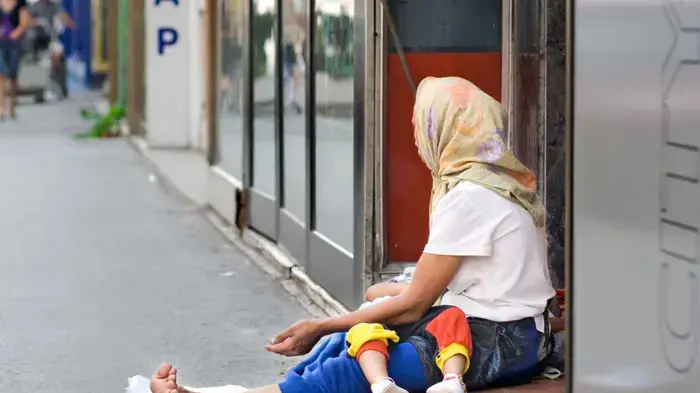“There were many small details, but the first and most significant was discovered by his Physical Education teacher.
Lucia didn't want to go to gym class or change in her locker room.
She was traumatized by imagining being teased by others, comparing her body with that of the other girls, running less or with worse style;
in short, not being up to par and being parodied.
Sometimes they yelled at her: 'Fat, ugly, you embarrass others' [...].
Others laughed out loud at her when they saw her in shorts;
Others, when they were in class, would tell her: 'Have you looked in the mirror, disgusting?'.
All this in whispers from her, so that the teacher would not hear them ”.
This is how the story of Lucía begins to be told, a teenager who committed suicide at the age of 13 in Murcia in 2017, in the book
Todos contra el bullying
, by María Zabay and Antonio Casado (Alienta Editorial).
And perhaps this case, or perhaps one very similar, was one of those that a few years ago impressed Sixto González, a professor at the University of Castilla-La Mancha, in such a way that he was prompted to investigate bullying in general and , in particular, the one that happens around the Physical Education class.
A space, he explains, "very visible, very material" in which the difference is immediately evident (the one who is fatter, ganglier, shorter, clumsier...), which is one of the bases on which he begins to emerge. the
bullying
_
González —who published an article in The Conversation
two weeks ago
entitled Why are there more cases of bullying in Physical Education classes?— explains that this subject, which is taught in more open spaces, less regulated and controlled than the rest, It is an environment that is more conducive to the birth of bullying situations that can later spread not only to the classroom or to the corridors and recess, but much further.
“From the age of 10, they begin to have a mobile phone and, through social networks, WhatsApp, etc., the attacks can continue 24 hours a day.
If the child does not tell an adult, their teacher, or their parents, the matter escalates and can lead to a serious mental health problem, depression, anxiety, stress, and even, in extreme cases. of suicide."
In a context in which bullying is a widespread problem in schools —around a quarter of primary and secondary students believe there is
bullying
in their class, according to the latest survey by the Anar Foundation—, and in the While 78% of young Spaniards say they have suffered violence during their childhood while practicing sports —according to a study in several European countries by Hill University, in the United Kingdom—, conflicts can start with a subtle act.
Or by thoughtless external intervention by a teacher, by a parent.
In fact, what prompted the Asturian primary school teacher Víctor Borja to investigate bullying in Physical Education class was a conflict that started outside the school.
"I was the coach of a children's soccer team and, one day, a father approached me and told me that he should only bring out the good guys and always leave the bad guys on the bench."
He never did, but that man's attitude began to generate tensions in the rest of the parents who infected the children and moved to school, where they were all classmates.
“When my parents complained, the teacher himself messed with me”
Borja talks about more obvious aggressions, such as insults, and other more subtle ones, like that of the boy or the girl who is always chosen last when making teams.
Precisely, the Canarian artist and journalist Victoria Suárez recounts that the day she was aware that she was being bullied by her primary school classmates was one in which she was left alone, in the middle of a soccer field that seemed gigantic to her. , because nobody had chosen him for his team.
“I didn't know what it was to create a void, but there in the middle, completely alone, I understood it”, she relives today, at the age of 25, more than a decade after that.
There are also those who recall similar experiences, but aggravated by the actions of the teachers themselves.
For example, a young woman, who prefers not to give her name, who remembers how a primary Physical Education teacher picked on a boy because of his body odor, or how another teacher of the subject, already in secondary school, not only did nothing , but he encouraged the "continuous taunts of classmates over the years" towards her, and he even failed the subject because he did not play sports outside of school.
Alejandro Pérez, 24, tells a similar story in a context in which his classmates bullied him because he was bad at sports.
"When my parents complained, the teacher himself messed with me, said that I was very clumsy, that I was never going to be good at any sport and that it was normal for there to be fights," says Pérez, who later played basketball for years. federated and today he is a coach of that sport.
In any case, apart from the fact that it would be absolutely unfair to single out a whole group for the bad experiences of some students, the truth is that researchers agree that things have changed and continue to change at great speed.
"There are much more trained teachers," says Borja.
And González adds: “Honestly, I think that a lot of progress has been made, but there is still a lot to be done, especially in schools.
We must raise much more awareness in society, from parents to teachers.
And including the students.
The problem is that many times when a school or a management team, which is the one that deals with it, talks to the parents of a child who is bullying, the first reaction is: 'My son doesn't do that'.
From origin of the problem to solution lever
The professor of the University of Córdoba Rosario Ortega, one of the indisputable references in the study of bullying, has spent several years researching
bullying
and Physical Education.
“I had always had it as an intuition, but since we have carried out these investigations we have verified that, indeed, there is a certain specificity of the scenario and of the educational tradition.
First, because it happens outside the classroom, normally in a wide, open space, doing activities in which the body matters, in the sense that those who are chubby, those who are not very good, are exposed to some extent, the one that is very good, in which the competitiveness of sports activity appears... And, although many teachers have a line of work for coexistence, for good interpersonal relationships and such, it has not always been like that ”, explains Ortega .
The teacher has conducted these works together with Juan de Dios Benítez, a researcher at the University of Córdoba with extensive experience as a Physical Education teacher in secondary school, and Francisco Córdoba, a school counselor and also an associate professor at the same university.
"Although we have not focused on that, we have seen that, indeed, there is a little more incidence [of bullying] in these classes, due to their own characteristics," says Córdoba.
“But the most interesting thing that we have found in our research is that, when the Physical Education teacher knows what
bullying
is, what its dynamics are, its characteristics, what a dominance-submission scheme or a law of silence consists of, knows where to look and can act.
And to do it, moreover, in an area that gives much rise to intervention”.
Precisely, to help teachers know where to look, Córdoba and Ortega coordinated the publication, just over two years ago, of the book
Physical Education and Coexistence: Opportunities and Challenges in the Prevention of Bullying
.
González, for his part, pointed out in his recent article in
The Conversation
: “The very idiosyncrasy of Physical Education facilitates greater interaction between students, establishing greater contact and relationship between them.
This means that, depending on the orientation and involvement that one has, its practice can take two paths: on the one hand, it increases the probability of suffering behaviors of isolation, rejection, aggression and coexistence problems;
and on the other, to improve the prosocial behavior of students, favoring group cohesion”.
The predilection for one way or another seems evident;
The way to achieve this that the experts point out, as always, is attention to the problem and training.
You can follow EL PAÍS EDUCATION in
and
, or sign up here to receive
our weekly newsletter
.
Subscribe to continue reading
Read without limits
Keep reading
I'm already a subscriber









